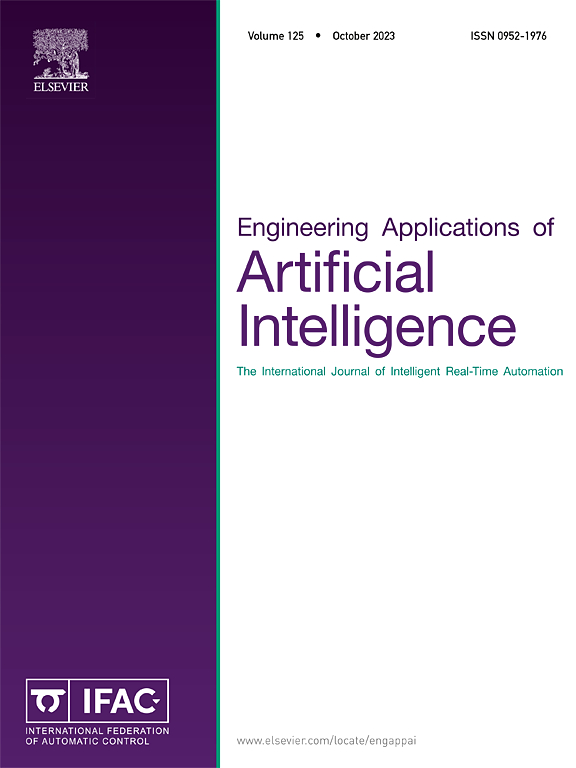耦合流作为基于模型的策略优化的指导
IF 8
2区 计算机科学
Q1 AUTOMATION & CONTROL SYSTEMS
Engineering Applications of Artificial Intelligence
Pub Date : 2025-07-02
DOI:10.1016/j.engappai.2025.111528
引用次数: 0
摘要
基于模型的强化学习(MBRL)提供了很高的样本效率,但存在累积的多步预测误差,从而降低了长期性能。为了解决这个问题,我们提出了一个耦合流引导的策略优化框架,其中两个耦合流量化并最小化真实和学习状态-行为分布之间的差异。通过减少这种差异,损失函数既可以作为判别器,为策略学习选择更准确的滚动,也可以作为奖励信号,改进动态模型以减轻多步误差。理论分析建立了期望收益差异的界限。经验评估表明,在不同的控制任务中,我们的方法比具有代表性的基于模型的方法获得了更高的累积奖励。这突出了它在数据稀缺领域(如机器人、推荐系统和自动驾驶)的适用性。本文章由计算机程序翻译,如有差异,请以英文原文为准。

Coupled flows as guidance for model-based policy optimization
Model-based reinforcement learning (MBRL) offers high sample efficiency but suffers from cumulative multi-step prediction errors that degrade long-term performance. To address this, we propose a coupled flows-guided policy optimization framework, where two coupled flows quantify and minimize the discrepancy between the true and learned state–action distributions. By reducing this divergence, the loss functions serve as both a discriminator, selecting more accurate rollouts for policy learning, and a reward signal, refining the dynamics model to mitigate multi-step errors. Theoretical analysis establishes a bound on the expected return discrepancy. Empirical evaluations demonstrate that our method achieves higher cumulative rewards than the representative model-based approaches across diverse control tasks. This highlights its applicability in data-scarce domains such as robotics, recommendation systems, and autonomous driving.
求助全文
通过发布文献求助,成功后即可免费获取论文全文。
去求助
来源期刊

Engineering Applications of Artificial Intelligence
工程技术-工程:电子与电气
CiteScore
9.60
自引率
10.00%
发文量
505
审稿时长
68 days
期刊介绍:
Artificial Intelligence (AI) is pivotal in driving the fourth industrial revolution, witnessing remarkable advancements across various machine learning methodologies. AI techniques have become indispensable tools for practicing engineers, enabling them to tackle previously insurmountable challenges. Engineering Applications of Artificial Intelligence serves as a global platform for the swift dissemination of research elucidating the practical application of AI methods across all engineering disciplines. Submitted papers are expected to present novel aspects of AI utilized in real-world engineering applications, validated using publicly available datasets to ensure the replicability of research outcomes. Join us in exploring the transformative potential of AI in engineering.
 求助内容:
求助内容: 应助结果提醒方式:
应助结果提醒方式:


